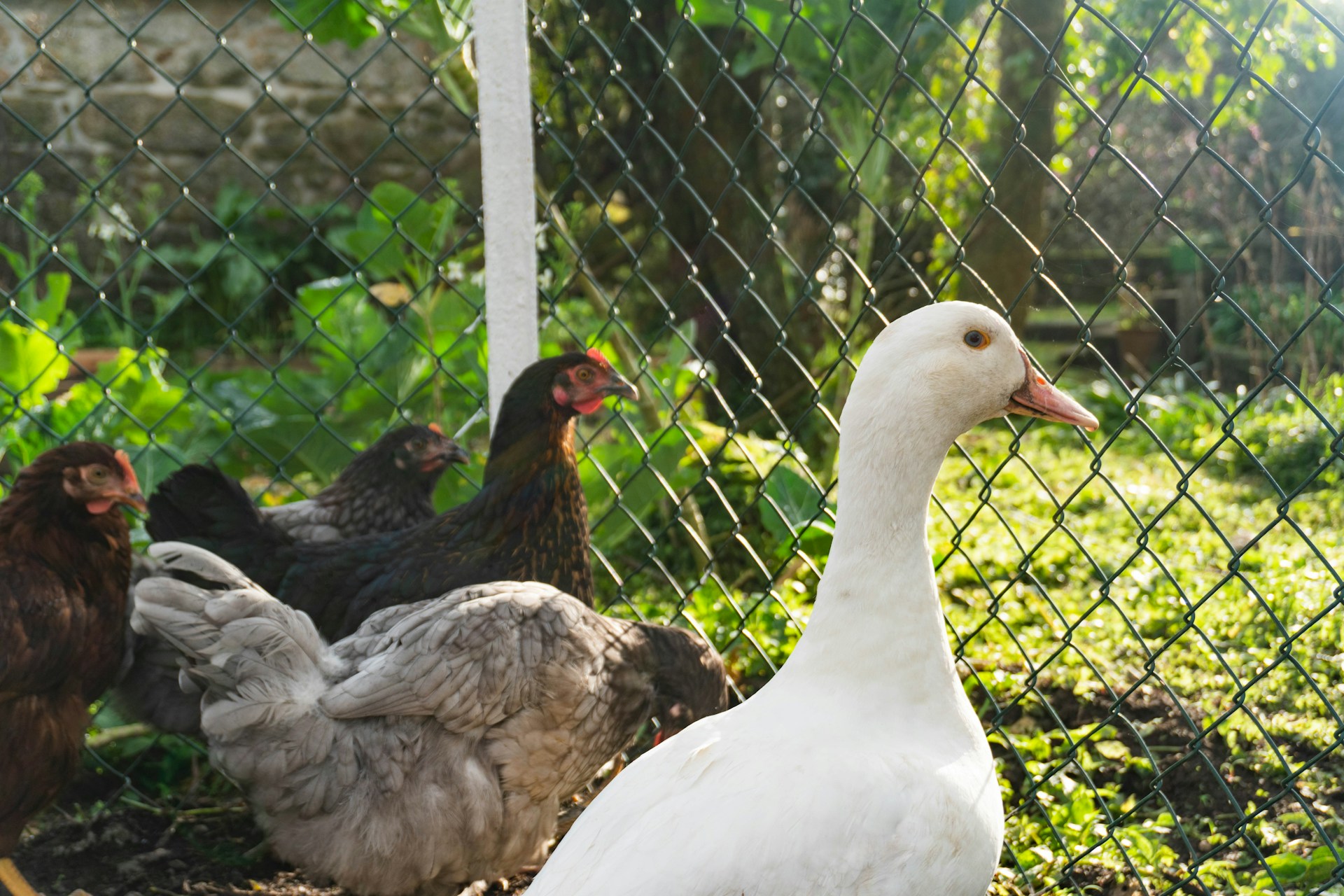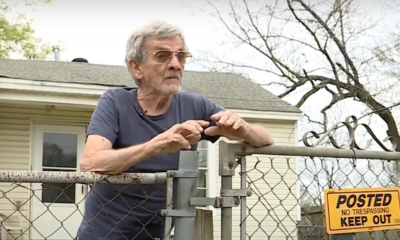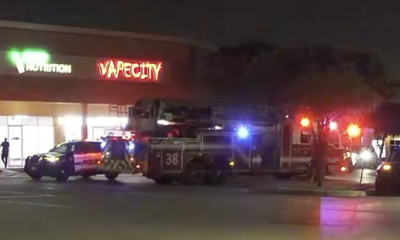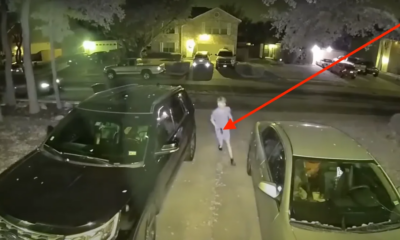Preparedness
Oklahoma Judge on Trial: Two Drive-bys Linked by Lone Glock

A judicial official in Oklahoma finds himself on the flip side of the law, as he has been indicted for involvement in two separate drive-by shootings that took place in 2023, one of which took place on a property belonging to his brother-in-law.
Close to 3:30 in the afternoon on the 12th of February, 2023, a vehicle approached a ranch in Bison, Oklahoma, approximately 75 miles north of Oklahoma City, and discharged several shots. The property’s owner, Kenneth Markes, has stated that bullets pierced his residence, causing damage to a window, a wall, and his oven. A solitary bullet alongside five empty .40-caliber shell casings was later found at the scene. Although Markes’ son was present at the time, thankfully, no one was harmed.
Markes expressed his disbelief by saying, “Seeing a person in a window, and missing by a matter of inches, is not just a random shooting.”
Notably, two days after this event, Markes’ brother-in-law, Brian Lovell — a 59-year-old associate judge in Garfield County, Oklahoma — reported that a firearm had been stolen from his vehicle.
As the year progressed to September 11th, a man was seen in a white SUV near the crossroads of Matamoros and Santa Maria in Austin, Texas, allegedly pointing a weapon and firing at other vehicles. A witness described the suspect as “a white male, wearing a baseball-style hat and grey shirt.”
The suspect reportedly fired a minimum of five shots, with police finding “several vehicles with projectile defect in them,” according to the affidavit. Three .40-caliber shell casings were later discovered at the scene.
Interestingly, about an hour later, Judge Brian Lovell was arrested less than two miles from the intersection where the shooting occurred, after his white SUV with Oklahoma plates allegedly hit another vehicle twice.
The affidavit stated, “This SUV was driven by a white male, wearing a baseball-style hat and a grey shirt who was identified as Brian Noel Lovell … by his Oklahoma Driver’s License.” Police also spotted “a black firearm in the front passenger floor board of Lovell’s SUV.”
Lovell confirmed that he had hit the woman’s vehicle twice but denied doing so intentionally. When questioned about the shooting earlier that day, he seemed to draw a blank. “Lovell advised he did not know why he would have shot his gun and he could not recall any part of the shooting incident,” the affidavit said.
Fortunately, no one was hurt in either the Austin shooting or the minor vehicle accident.
In November, two months after the Austin shooting and nine months after Markes’ ranch shooting, ballistic tests revealed both incidents involved the same weapon, a Glock 23 .40-caliber.
Fast forward to February 2024, Lovell found himself under arrest and facing eight felony counts of deadly conduct — discharge of a firearm relating to the Austin shooting. He was granted a $10,000 bond and released upon payment. His hearing for this case is set for June.
Recently, Lovell was arraigned on one felony count of use of a vehicle to facilitate the discharge of a firearm and an alternative felony count of discharging a firearm into a dwelling in relation to the shooting at Markes’ residence. As Lovell did not enter a plea, the court entered a not-guilty plea on his behalf. He was given a $25,000 bond and released under the condition that he avoids Markes and his family and all firearms.
Stephen Jones, Lovell’s defense attorney in Oklahoma, questions the indictment. “It was a long time before the indictment was returned and that bears on him and his family. But he’s a strong character,” Jones stated. “And in my view, he’s innocent.”
Jones further conveyed the defense’s intention to “attack the jurisdiction and soundness of the indictment.” “From our own investigation, the evidence is insufficient to convince a jury beyond a reasonable doubt,” Jones argued.
Meanwhile, Markes displayed less confidence in his brother-in-law’s innocence. “I had no idea that it could’ve been Brian Lovell,” Markes shared. He reiterated his earlier sentiment: “Seeing a person in a window, and missing by a matter of inches, is not just a random shooting.”
Lovell’s court hearing concerning the shooting at Markes’ ranch is scheduled for late August. Garfield County District Judge Paul Woodward previously stated that Lovell had agreed not to preside over cases until his own case is fully resolved.
Watch a local news report about the incident below:
Let us know what you think, please share your thoughts in the comments below.

Preparedness
Chickens or Ducks Which Reigns Supreme on Your Homestead

When it comes to choosing the right poultry for your homestead, the decision often boils down to chickens or ducks. Both have their unique advantages and challenges, making the choice a personal one that depends on your specific needs and environment.
For those starting their journey into homesteading, both chickens and ducks offer a steady supply of eggs and meat. However, differences in egg production may influence your decision. Ducks generally outlay chickens, producing between 32 to 52 pounds of eggs annually, compared to chickens’ 22 to 34 pounds. The breed plays a significant role in these numbers, so research is crucial.
Ducks take a little longer to start laying eggs, beginning at 6-7 months, compared to chickens at 4-5 months. Nevertheless, ducks often have a longer productive lifespan. Duck eggs are not only larger, averaging 2.5 ounces compared to chicken eggs at 1.5 ounces, but they also boast higher fat, protein, cholesterol, and omega-3 levels.
Both birds are viable options for meat production. While chicken meat is more familiar to many, duck meat is a nutritious alternative enjoyed globally. The process of raising these birds for meat is similar, though some breeds are more suitable than others.
In terms of housing, chickens are more adaptable to confinement, making them a better choice for limited spaces. They require coops with roosting bars and nesting boxes. Ducks thrive in a free-range setting but still need a “duck house” for safety. Unlike chickens, ducks don’t need nesting boxes, as they create nests from available litter.
“Ducks tend to be messier than chickens,” which means more cleaning in their housing area. Regardless of your choice, sturdy fencing is crucial to protect them from predators. Ducks require less height in fencing since they aren’t strong fliers, but a roof is essential to guard against aerial threats.
Environmental conditions also play a role in your decision. While chickens need specific breeds to tolerate extreme climates, ducks are more adaptable to varying weather conditions. Ducks also manage well in wet environments, unlike chickens, which prefer drier settings.
Water is a significant consideration for ducks, as they need more than chickens. Ideally, a pond or a filled baby pool should be available for ducks to bathe and clear their nasal passages. “At a minimum, ducks need to be able to dunk their whole head into water on a daily basis.”
Dietary needs differ slightly between the two. Chickens require a controlled diet with measured feedings, whereas ducks, especially if free-range, forage for much of their food. They are excellent for natural pest control, consuming slugs, worms, and various insects.
Ducks generally exhibit stronger disease resistance and have fewer health problems, particularly in their youth. They are also quieter than chickens, which can be quite noisy, especially if roosters are present. Ducks only become loud when agitated, and male ducks, or drakes, emit a wheezing sound rather than a quack.
Temperament is another factor to consider. Ducks are typically friendlier and less aggressive than chickens, which are known to peck. Ducks are also easier to manage since they don’t fly or run as quickly.
Availability and cost can be deciding factors too. Chickens are widely accessible and affordable, whereas ducks might require ordering and are usually more expensive upfront. However, duck eggs can fetch a higher price if you plan to sell them.
Ultimately, the choice between chickens and ducks depends on your homestead’s specific needs and conditions. Weighing the pros and cons of each will help you make the best decision for your situation.
Let us know what you think, please share your thoughts in the comments below.
Preparedness
Master Urban Survival: Two Essential Preparedness Strategies

In the bustling environment of city life, emergencies can strike at any moment, often catching residents off guard. Whether it’s during your daily commute, while you’re at work, or even in the middle of the night, urban dwellers must be ready for anything. This is why it’s crucial to have multiple contingency plans.
“Have a Plan B, C, D and E,” to ensure you’re never left without options. This involves preparing emergency kits and planning several evacuation routes, both by car and on foot. When an emergency unfolds, having various strategies allows you to choose the best course of action under pressure.
Preparation doesn’t stop at planning; it extends to practice. If you anticipate needing to walk long distances, such as 30 miles out of the city with a heavy pack, physical readiness is key. Understanding the terrain firsthand is vital, as maps and apps may fail, particularly if cellular service is disrupted. In a true crisis, self-reliance on your experience and pre-established plans is paramount.
The second principle of urban preparedness involves embracing self-reliance. City life often provides easy access to modern conveniences, but these can vanish quickly in a crisis. “You won’t be able to rely on an Uber during a crisis,” and access to essentials like food, water, and power might be severely restricted.
Growing your own food in the city, contrary to popular belief, is entirely feasible. Vegetables can flourish in potted plants on rooftop gardens, and herbs like basil can thrive in sunny, southern-facing windows. Community gardens also offer urban garden plots for those willing to cultivate their own food supply. “Learning to grow your own food is an extremely valuable skill,” aiding not just in emergencies but also in potential resettlement scenarios.
Foraging is another valuable skill, often underestimated in urban settings. Despite misconceptions, cities are not entirely disconnected from nature. Local foraging groups can guide you on what is safe to pick and eat, allowing you to supplement your food supply without battling supermarket crowds.
Ultimately, the key to urban preparedness lies in continuous learning and self-reliance. In a crisis, relying on external help can be a lengthy wait, as thousands of others might be seeking the same assistance. By mastering these skills, you can navigate emergencies more confidently and independently.
In conclusion, embracing these two principles—having multiple plans and fostering self-reliance—will set you on the path to comprehensive urban preparedness. Avoid feeling overwhelmed by taking it step by step, ensuring that you and your loved ones are ready for whatever challenges city life might throw your way.
Let us know what you think, please share your thoughts in the comments below.
Preparedness
Nationwide Concealed Carry: A Game Changer for Gun Owners?

House Republicans are once again advocating for a nationwide policy that would allow concealed carry permits to be recognized across state lines. This initiative, known as the Constitutional Concealed Carry Reciprocity Act, aims to ensure that concealed carry permits are treated similarly to driver’s licenses, which are acknowledged by all states.
“There’s a lot of words there, but it’s a very common sense, simple piece of legislation,” explained Rep. Richard Hudson from North Carolina, the primary sponsor of the bill. Hudson emphasized the fundamental idea behind the proposal: “It says that every state should recognize the concealed carry permissions of the other states.”
The bill has garnered support from numerous Republican lawmakers and even one Democrat in the past. Proponents argue that it provides protection for law-abiding gun owners who might otherwise face legal issues simply for crossing state borders. Hudson articulated this concern by stating, “When law-abiding citizens are traveling, they shouldn’t be turned into criminals because they cross the state line.”
Former President Donald Trump has also expressed his endorsement of the bill. In a campaign video for 2024, Trump declared, “I will sign concealed carry reciprocity. Your Second Amendment does not end at the state line.”
This isn’t the first time such legislation has been introduced. A similar bill passed the House in 2017 but encountered obstacles in the Senate. Hudson remains optimistic about the current efforts, noting, “We got it through the Judiciary Committee, we got it through the House. But the Senate wouldn’t move it.” He further mentioned that Senate Majority Leader John Thune is committed to advancing the issue this time around.
Despite its support, the bill faces considerable opposition from gun safety advocates and certain state officials. Critics argue that a national reciprocity law could undermine individual states’ authority to enforce their own concealed carry standards, potentially diluting stricter gun regulations in states like New York and California.
“These lawmakers are pushing a federal mandate that would override carefully crafted gun safety laws, like New York’s,” said Everytown for Gun Safety in a statement. They expressed concern that such a mandate would force states to allow individuals from across the nation to carry concealed firearms without sufficient oversight.
Opponents also highlight significant variations in state laws regarding concealed carry. While some states have stringent measures preventing individuals with violent criminal records from carrying concealed weapons, others have more relaxed requirements. Critics argue that a nationwide policy could permit more dangerous individuals to legally carry firearms in states with stricter regulations.
Let us know what you think, please share your thoughts in the comments below.
-

 Tactical1 year ago
Tactical1 year ago70-Year-Old Fends Off Intruder with Lead-Powered Message
-

 Tactical1 year ago
Tactical1 year agoVape Shop Employee Confronts Armed Crooks, Sends Them Running
-

 Preparedness9 months ago
Preparedness9 months agoEx-Ballerina’s Guilty Verdict Sends Tremors Through Gun-Owner Community
-

 Preparedness7 months ago
Preparedness7 months agoGood Samaritan Saves Trooper in Harrowing Interstate Confrontation
-

 Tactical1 year ago
Tactical1 year agoMidnight SUV Theft Interrupted by Armed Homeowner’s Retaliation
-

 Survival Stories2 years ago
Survival Stories2 years agoEmily’s 30-Day Experience of Being Stranded on a Desert Island
-

 Preparedness7 months ago
Preparedness7 months agoArizona Engineer’s Headless Body Found in Desert: Friend Charged
-

 Preparedness7 months ago
Preparedness7 months agoBoy Saves Dad from Bear Attack with One Perfect Shot
Donna
May 23, 2024 at 5:28 pm
Nothing should be done about gun laws other than making it easy for non-criminals to own guns